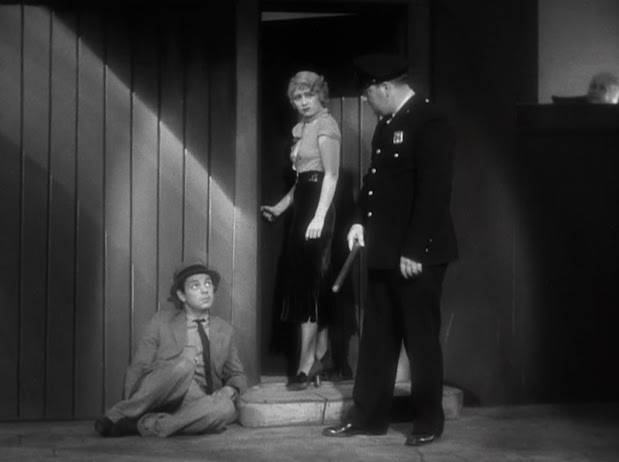It's the Depression, dearie...
On the 7th of April, 1932, future-President Franklin Delano Roosevelt gave a radio speech addressing the many problems facing Depression-hit America at that time. Touching on a number of points (and laying the groundwork for what would presently become known as the "New Deal") he expounds on the plight of those hit hardest by the economic downturn:
Roosevelt himself had not personally coined the term Forgotten Man but he was the one who successfully made the label synonymous with the destitute masses of unemployed and homeless who were rapidly becoming a familiar sight in 1930s America. By the time Roosevelt took office in 1933, the "Forgotten Men" of the breadlines, the soup kitchens and the makeshift shantytowns (Hoovervilles, as they were dubbed, after Roosevelt's predecessor) had become the popular face of the Great Depression.
And the Forgotten Men loom very large in the second of Busby Berkeley's "Depression" trilogy of films from 1933.
Gold Diggers of 1933 was released in May of that year (42nd Street had been released on the 9th of March; five days after Roosevelt had been sworn in as President) and features many familiar faces. Ruby Keeler, Dick Powell, Guy Kibbee, Ned Sparks and Ginger Rogers had all appeared in 42nd Street (playing different characters) but Gold Diggers deals with the Depression much more explicitly than the earlier film.After a disastrous incident with a spectacular musical revue that closes before it opens, producer Barney Hopkins (Ned Sparks) decides to put on a show all about the Depression. If only he can secure the financial backing...
Once again, Busby Berkeley's production numbers have to be seen to be believed (the neon violins are especially impressive) but what truly sets this film apart is the "Forgotten Man" number, which is arguably the first time a Hollywood musical expressly deals with current social problems in one of its musical numbers.
"Forgotten Man" also features the contralto Etta Moten, who a year later was invited to perform this number for President Roosevelt's birthday (becoming the first African American to perform at the White House in the 20th Century).
He's not exaggerating. "Forgotten Man" is exactly that.
We will screen Gold Diggers of 1933 at 7.30 on Thursday, the 4th of July(!) at the Victoria Park Baptist Church.














Comments
Post a Comment